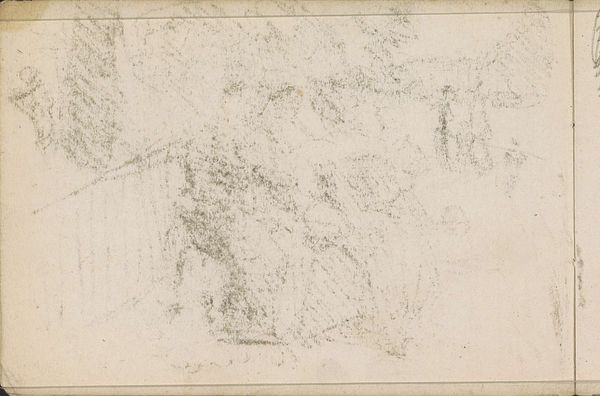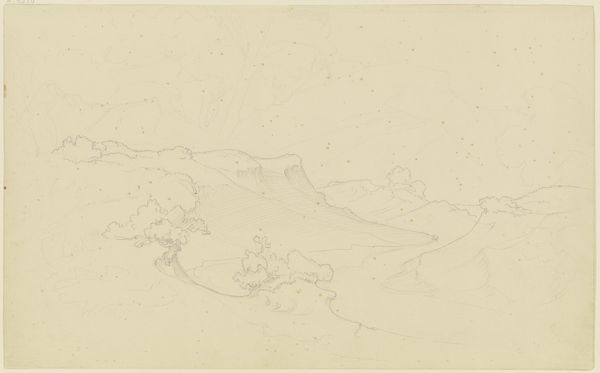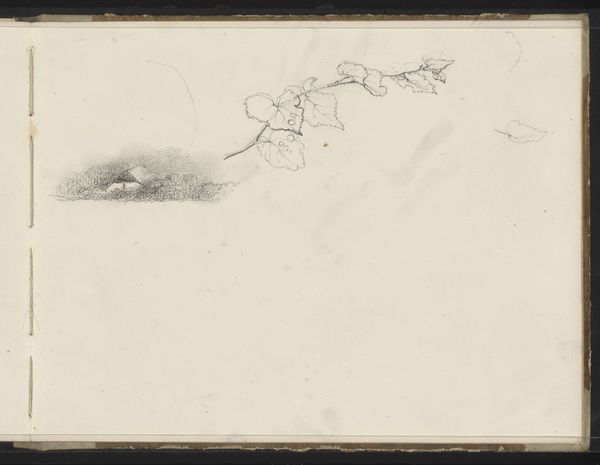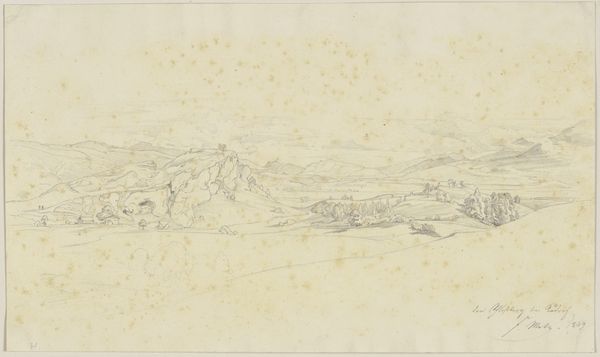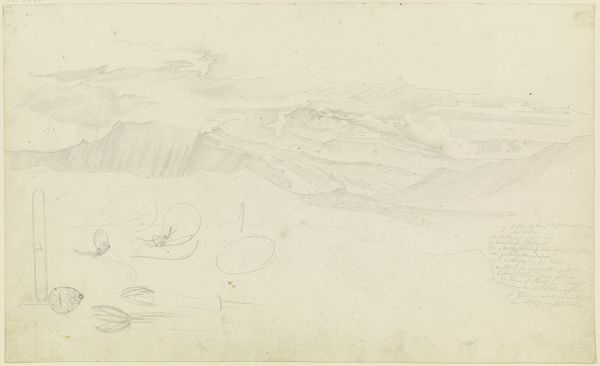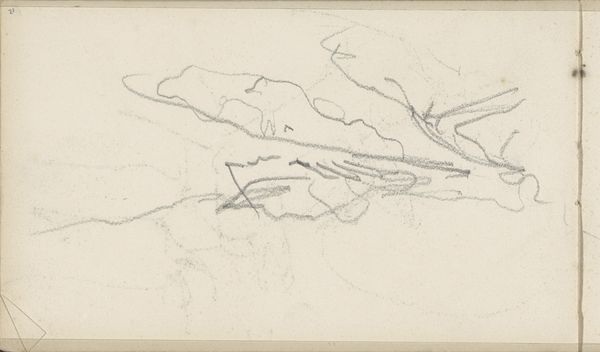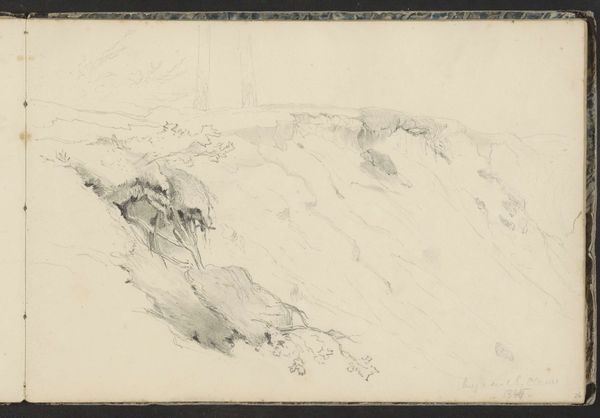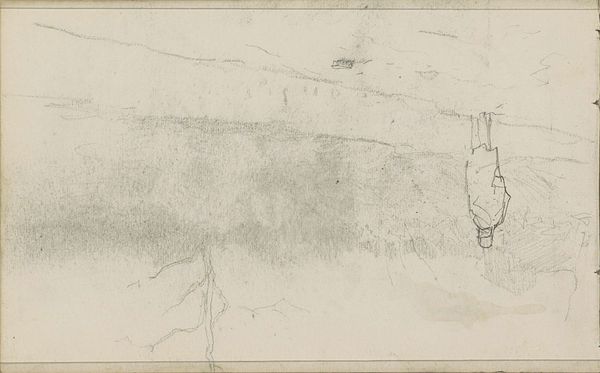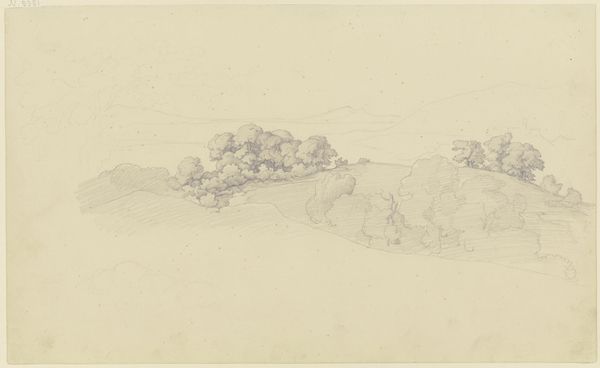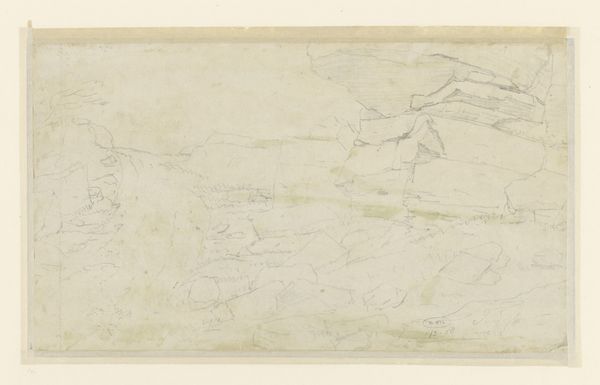
drawing, pencil
#
drawing
#
landscape
#
form
#
romanticism
#
pencil
#
realism
Copyright: Public Domain
Curator: Today, we’re looking at Carl Philipp Fohr’s "Study of Rocks," a pencil drawing from around 1818, held at the Städel Museum. What strikes you most about it? Editor: The sheer stillness. It’s just stone, meticulously rendered, but it evokes a feeling of profound geological time. It makes me think about the earth's hidden processes and what kind of labor went into acquiring these minerals in order to compose such scenery. Curator: Fohr, working within the Romanticism movement, often explored the natural world, but he did so with an almost scientific eye. The rise of geology as a formal discipline really began to impact artistic depictions of landscape. Editor: Precisely. You can see it in the almost clinical detail. The artist captures not just the surface texture but also implies the internal structure, the layering of the material. One imagines him with hammer and chisel, gathering materials. Curator: This was also a period of growing national consciousness and the establishment of art academies, like the one Fohr studied at. The “study” was considered a vital stage in art training, as well as an artistic exercise. The aim was to accurately represent not just nature, but nature as perceived through a classical lens. Editor: I agree. But isn’t there also a tension here? It's objective realism, a documentation of rock formations, yes, but filtered through a romantic sensibility that sought transcendence in nature's details, thus reflecting contemporary modes of labor? It’s also interesting to notice how quickly the stone form blends in with the bare paper, almost consuming it, with only a handful of outlines drawn. Curator: Absolutely. The artwork demonstrates the Romantic quest for the sublime while highlighting the crucial institutional frameworks within which artists like Fohr operated. It represents a desire for empirical study mixed with a powerful sense of national identity. Editor: Looking at the labor of it all, one might not only want to look into art institutions or Fohr himself. How was it possible for such detailed, technical works of landscape to rise in popular consumption? And to what degree were the landscapes available to the middle and upper classes while being the labor grounds of the lower ones? Curator: That’s fascinating to consider—the broader questions of accessibility and who had access to, and control over, natural resources, alongside its artistic representation. Fohr’s "Study of Rocks" becomes a lens through which to examine landscape, artistry, material, and labor—a view into the multifaceted reality of 19th-century society. Editor: Exactly! We're no longer just seeing rocks; we're witnessing layers of social, material, and aesthetic value, all etched onto paper.
Comments
No comments
Be the first to comment and join the conversation on the ultimate creative platform.
